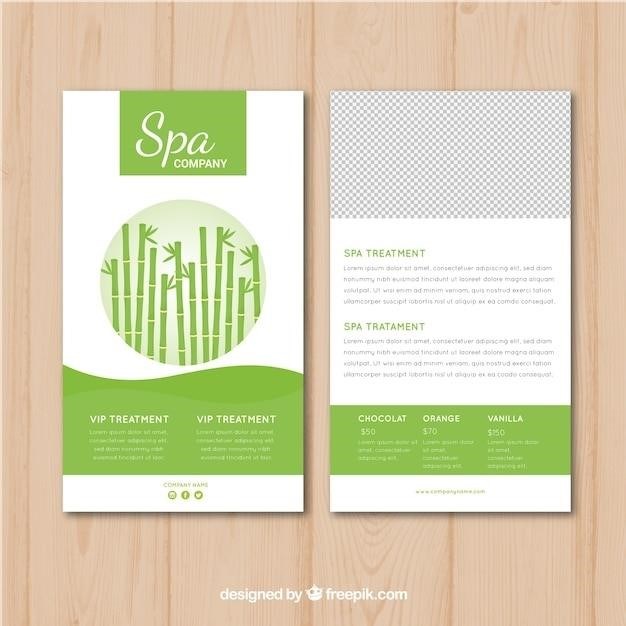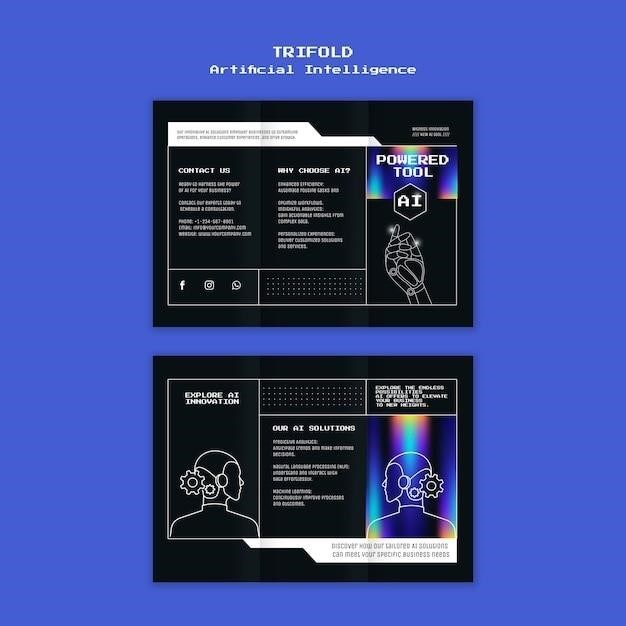The Coats Tire Changer Manual provides essential guidance for efficient and safe operation of Coats tire changers, including models like the COATS 7050 AX/EX and 5030A․
1․1 Overview of the Coats Tire Changer
The Coats Tire Changer is a professional-grade tool designed for efficient and safe tire mounting and demounting․ Known for its reliability and versatility, it is widely used in automotive industries․ The device features a robust construction and user-friendly interface, making it a preferred choice for mechanics and technicians․ Specific models, such as the COATS 7050 AX/EX and 5030A, are equipped with advanced features like rim clamps and pressure release valves․ These models are designed to handle a variety of tire sizes, including truck and tubeless tires․ The Coats Tire Changer is built with safety and durability in mind, ensuring long-term performance․ Its design simplifies the tire-changing process, reducing the risk of damage to wheels and tires․ This overview highlights the key characteristics and applications of the Coats Tire Changer, providing a foundational understanding for users․
1․2 Importance of the Manual for Users
The Coats Tire Changer Manual is crucial for users to operate the equipment safely and effectively․ It contains detailed instructions, safety precautions, and maintenance tips tailored for models like the COATS 7050 AX/EX and 5030A․ By following the manual, users can ensure optimal performance, prevent equipment damage, and avoid potential hazards․ The manual also provides troubleshooting guides and parts identification, helping users diagnose and resolve issues efficiently․ Adhering to the instructions minimizes risks and prolongs the lifespan of the tire changer․ It is essential for both novice and experienced operators to thoroughly read and understand the manual before using the equipment․ This ensures compliance with safety standards and proper usage, making the manual an indispensable resource for all Coats Tire Changer users․ Regular reference to the manual helps maintain reliability and safety in daily operations․

Key Features of the Coats Tire Changer
Coats Tire Changers offer robust construction, compatibility with various tire sizes, and ergonomic designs for efficiency, ensuring reliable performance across different models like the COATS 7050 AX/EX․
2․1 Design and Construction
The Coats Tire Changer is built with durable materials and precision engineering, ensuring long-lasting performance․ Its robust framework supports heavy-duty use, while ergonomic design enhances user comfort․ High-quality components, such as steel alloys, provide strength and reliability․ The unit’s compact design allows for efficient workspace utilization․ Advanced clamping mechanisms ensure secure tire handling, minimizing the risk of damage․ The construction incorporates safety features like protective guards and fail-safe mechanisms to prevent accidents․ The design prioritizes ease of maintenance, with accessible parts for routine servicing․ Whether for professional garages or home use, the Coats Tire Changer’s construction ensures efficient and safe tire-changing operations․ Its reliability and durability make it a trusted choice for handling a wide range of tire sizes and types․
2․2 Tire Compatibility and Specifications
The Coats Tire Changer is designed to handle a wide range of tire sizes and types, ensuring versatility for various applications․ It supports both standard and heavy-duty tires, including tubeless truck tires, with specific models like the COATS 4300 accommodating maximum tire sizes up to 45 inches․ The unit is compatible with rims ranging from 13 to 24 inches in diameter, making it suitable for passenger vehicles, light trucks, and commercial vehicles․ Load capacity varies by model, with some versions capable of handling up to 1,200 pounds․ The manual provides detailed specifications and compatibility charts to help users select the appropriate model for their needs․ Proper alignment with tire and wheel configurations ensures safe and efficient operation․ Always refer to the manual for exact specifications to avoid damage or unsafe conditions․
2․3 Ergonomic Design for Efficiency
The Coats Tire Changer is engineered with an ergonomic design to enhance efficiency and reduce operator fatigue․ Its intuitive control layout ensures smooth operation, while the optimized placement of levers and valves minimizes physical strain․ The unit’s compact footprint and balanced construction allow for easy maneuverability, making it ideal for busy workshops․ Safety features, such as emergency shutdown controls, are strategically located for quick access․ The ergonomic design also promotes proper posture and reduces the risk of accidents․ By streamlining the workflow, the Coats Tire Changer enables technicians to work more efficiently, completing tasks faster without compromising precision․ This focus on user comfort and operational ease makes it a preferred choice for professionals in the automotive industry․ The design ensures a seamless experience, aligning with modern workplace ergonomics standards․

Operating Instructions
Follow detailed steps for safe operation, including pre-operation checks, mounting, and demounting tires․ Refer to specific models like the COATS 5030A for tailored guidance and efficiency․
3․1 Pre-Operation Checks and Safety Precautions
Before using the Coats Tire Changer, conduct thorough pre-operation checks to ensure safe and efficient functioning․ Inspect the unit for any damage or wear, and verify that all moving parts are properly lubricated․ Check tire compatibility with the changer’s specifications to avoid damage or accidents․ Ensure the release valve is functioning correctly to manually release air pressure when needed․ Always follow the manufacturer’s guidelines for load capacity and tire size limits․ Review warning labels and decals on the unit, and ensure they are clean and visible․ Wear appropriate personal protective equipment, such as gloves and safety glasses, to minimize risks․ Familiarize yourself with emergency shutdown procedures and keep the area clear of obstacles․ Refer to the manual for model-specific instructions, such as those for the COATS 5030A or 7050 AX/EX, to ensure compliance with safety standards․
3․2 Mounting and Demounting Tires
Mounting and demounting tires on the Coats Tire Changer requires precise steps to ensure safety and efficiency; Always position the wheel assembly securely on the changer, aligning it with the center clamp․ For demounting, inflate the tire slightly and use the release valve to deflate it before loosening the beads with the bead loosener․ Once loosened, use the tire lever to carefully pry the tire from the rim, working around the circumference․ For mounting, apply lubricant to the rim and tire beads, then reseat the beads using the inflation system․ Tighten the valve core and ensure the tire is properly secured․ Refer to model-specific instructions, such as those for the COATS 5030A or 7050 AX/EX, for detailed guidance․ Always follow safety precautions and keep the area clear of obstacles to prevent damage or injury․
3․3 Emergency Procedures and Shutdown
In case of an emergency, immediately stop the Coats Tire Changer and activate the emergency shutdown․ Release air pressure using the release valve to prevent further damage or hazards․ If a tire fails to deflate, do not force it; instead, disconnect power and contact professional assistance․ Always prioritize operator safety by maintaining a safe distance and ensuring the area is clear of obstacles․ After an emergency, inspect the unit for damage before resuming operations․ Regular maintenance, as outlined in the manual, helps prevent emergencies․ Keep emergency contact information handy and ensure all operators are trained in shutdown procedures․ Refer to specific models like the COATS 5030A or 7050 AX/EX for detailed emergency protocols․ Never ignore warning signs or unusual machine behavior to avoid potential risks․

Maintenance and Servicing
Regular maintenance ensures optimal performance․ Lubricate moving parts as needed, despite self-lubricating designs․ Check for wear, clean debris, and follow the manual’s schedule․ Ensure reliability and safety, especially for models like the COATS 5030A, and refer to the maintenance guide for detailed procedures․
4․1 Routine Maintenance Schedule
A routine maintenance schedule is crucial for ensuring the longevity and optimal performance of your Coats Tire Changer․ Begin by inspecting all moving parts weekly to identify wear or damage․ Lubricate components as specified, even though some models, like the COATS 5030A, feature self-lubricating designs․ Clean debris from the chassis and clamping areas regularly to prevent interference with operations․ Check hydraulic systems monthly for leaks or pressure issues․ Every three months, perform a deep clean of the unit, paying attention to hidden compartments․ Annually, have a professional inspect and service the tire changer, especially for high-use models like the COATS 7050 AX/EX․ Always refer to the manual for specific maintenance schedules tailored to your model․ Adhering to these routines ensures safety, efficiency, and extended equipment life․

4․2 Lubrication of Moving Parts
Lubrication is essential for maintaining the smooth operation of your Coats Tire Changer․ While some models, like the COATS 40-40SA, feature self-lubricating systems, regular maintenance is still required․ Apply high-quality grease to moving components such as gears, shafts, and clamps every 500 cycles or as specified in the manual․ Avoid over-lubrication to prevent attracting dust and debris․ For models with hydraulic systems, ensure the fluid levels are checked and topped up as needed․ Use only the recommended lubricants to avoid damaging the equipment․ Proper lubrication reduces friction, prevents wear, and ensures the longevity of the tire changer․ Always refer to the manual for specific lubrication points and intervals tailored to your Coats Tire Changer model, such as the COATS 5030A or 7050 AX/EX․
4․3 Troubleshooting Common Issues
Troubleshooting common issues with your Coats Tire Changer ensures optimal performance and minimizes downtime․ If the machine fails to clamp or release tires, check the hydraulic system for leaks or low fluid levels․ For models like the COATS 5030A, inspect the release valve for proper function․ If the clamp is not aligning correctly, adjust the center clamp or refer to the manual for calibration steps․ Lubrication issues may cause stiffness, so ensure moving parts are well-greased․ Electrical problems, such as non-responsive controls, may require checking connections or fuses․ For the COATS 7050 AX/EX, verify the air pressure settings if tire mounting is inconsistent․ Always consult the manual for specific troubleshooting guidance tailored to your model․ Regular maintenance and timely repairs are crucial for extending the life of your Coats Tire Changer․

Parts Identification
Identify major components like clamps, valves, and bezels using the manual’s part numbers and descriptions for models like the COATS 5030A and 7050 AX/EX․
5․1 Major Components of the Tire Changer
The Coats Tire Changer consists of key components such as the rim clamp, valve bracket, and pressure gauge, each designed for specific functions․ The rim clamp secures the wheel during operation, while the valve bracket controls air pressure release․ Other essential parts include the bead breaker, turntable, and foot pedal, which work together to simplify tire mounting and demounting․ These components ensure safe and efficient performance․ Always refer to the manual for detailed part descriptions and numbers to maintain proper functionality․
5․2 Part Numbers and Descriptions
The Coats Tire Changer Manual lists specific part numbers and their descriptions to help users identify components․ For instance, part number 8181918 refers to the Bar-Valve Bracket, while 8182882 is associated with the manual or specific components․ These part numbers are essential for ordering replacements or repairs․ The manual provides detailed descriptions of each part, ensuring users can accurately identify and maintain their tire changer․ Always refer to the official documentation for precise part numbers and descriptions to avoid mismatches during servicing or replacement․ This section is crucial for maintaining the functionality and longevity of the Coats Tire Changer․

Safety Guidelines
Always read the manual and follow safety tips to avoid hazards․ Be aware of explosion risks and keep all instructions visible for safe operation of the Coats Tire Changer․
6․1 General Safety Tips for Operators
Always read the manual and understand safety guidelines before operating the Coats Tire Changer․ Wear protective gear like gloves and safety glasses․ Ensure the wheel is securely clamped to prevent accidents․ Regularly inspect the equipment for damage or wear․ Avoid over-inflating tires, as this can lead to explosions․ Keep the work area clean and well-lit․ Never leave the machine unattended while in operation․ Follow proper procedures for demounting and mounting tires to avoid personal injury․ Keep all safety decals visible and legible․ Familiarize yourself with emergency shutdown procedures․ Avoid using damaged or mismatched components․ Follow the manufacturer’s instructions for load capacity and tire size limits․ Proper training is essential for safe operation․ Always refer to the manual for specific safety precautions related to your Coats Tire Changer model․
6․2 Warning Signs and Hazard Precautions
Warning signs and hazard precautions are critical for safe operation of the Coats Tire Changer․ Always be aware of explosion hazards, especially when handling over-inflated tires․ Follow proper deflation procedures to avoid accidents․ Keep all safety decals clean and visible, as they provide essential warnings and guidelines․ Never exceed the recommended load capacity or tire size limits specified in the manual․ Be cautious of sharp edges or moving parts that could cause injury․ Avoid using damaged or mismatched components, as this can lead to equipment failure․ Keep loose clothing and long hair tied back to prevent entanglement․ Ensure the work area is free from flammable materials․ Adhere to all safety symbols and instructions provided in the manual․ Proper training and adherence to these precautions will minimize risks and ensure safe operation of the Coats Tire Changer․

Technical Specifications
The Coats Tire Changer’s technical specifications include load capacity, tire size limits, and dimensions, ensuring compatibility and safety for various tire models and operational requirements․
7․1 Models and Variants of Coats Tire Changers
Coats offers a range of tire changer models, including the COATS 7050 AX/EX, 5030A, and 4300, each designed for specific tire types and sizes․ The 7050 AX/EX model features a rim clamp design, suitable for high-capacity tires, while the 5030A is known for its efficiency with standard and heavy-duty tires․ The 4300 model is specialized for tubeless truck tires, ensuring versatility across different applications․ These variants cater to diverse needs, from automotive shops to industrial settings, providing reliable performance and durability․ Each model is engineered to meet precise specifications, ensuring optimal functionality and user safety․ By offering multiple variants, Coats addresses the varying demands of the tire service industry effectively․
7․2 Load Capacity and Tire Size Limits
The Coats Tire Changer is designed to handle a wide range of tire sizes and loads, ensuring compatibility with various vehicle types․ The maximum load capacity varies by model, with the COATS 4300 capable of managing tubeless truck tires up to specific weight limits․ Tire size limits are clearly outlined in the manual, ensuring operators work within safe parameters․ For example, the COATS 5030A is optimized for standard and heavy-duty tires, while the 7050 AX/EX accommodates larger rims and heavier loads․ Adhering to these specifications is crucial for safe and efficient operation․ Users are advised to consult the manual for precise load and size limits to avoid exceeding the unit’s capacity and ensure optimal performance․ Proper adherence prevents damage to both the tire changer and the tires being serviced․
7․3 Dimensions and Weight of the Unit
The Coats Tire Changer’s dimensions and weight are designed for optimal workspace integration and mobility․ While specific measurements vary by model, units like the COATS 4300 and 5030A are built to fit standard workshop environments․ The weight ensures stability during operation, preventing movement under load․ Dimensions are tailored to balance accessibility and space efficiency, making the unit suitable for various garage layouts․ For precise measurements, refer to the technical specifications section of the manual․ These details are crucial for proper installation and ensure the unit fits seamlessly into your workspace․ The design prioritizes both functionality and practicality, offering a robust yet compact solution for tire servicing needs․ Always check the manual for exact dimensions and weight to plan your workspace effectively and ensure safe operation․ This information is vital for installation and long-term maintenance of the tire changer․ Proper placement enhances efficiency and safety in daily use․

Manual Structure and Navigation
The Coats Tire Changer Manual is organized logically, with clear sections like Table of Contents, Operating Instructions, and Technical Specifications for easy navigation and quick access to information․
8․1 Understanding the Table of Contents
The Table of Contents in the Coats Tire Changer Manual serves as a roadmap, listing all sections and subsections for easy access․ It begins with an introduction, followed by key features, operating instructions, maintenance, parts identification, safety guidelines, technical specifications, and resources for support․ Each section is numbered and titled clearly, allowing users to quickly locate specific information․ For instance, under the “Operating Instructions” section, users can find detailed guides on pre-operation checks, mounting and demounting tires, and emergency procedures․ The table of contents is structured to ensure that users can navigate seamlessly through the manual, whether they are looking for general safety tips or troubleshooting common issues․ This organized approach enhances the manual’s usability, making it a valuable resource for both new and experienced operators․
8․2 How to Read and Interpret the Manual
Reading and interpreting the Coats Tire Changer Manual requires attention to its structured format․ Begin by reviewing the table of contents to locate relevant sections․ Each chapter is divided into subsections, providing detailed information on specific topics such as operation, maintenance, and safety․ Icons and symbols are used throughout to highlight important notes, warnings, and cautions․ Always start with the safety guidelines to ensure proper handling of the equipment; Technical specifications and part numbers are clearly listed to aid in identification and ordering․ The manual is designed to be user-friendly, with step-by-step instructions for tasks like mounting and demounting tires․ Refer to the troubleshooting section for common issues and their solutions․ By following the manual systematically, users can maximize the efficiency and longevity of their Coats Tire Changer․ The manual is a comprehensive guide tailored for both novice and experienced operators․
8․3 Symbols and Abbreviations Used
The Coats Tire Changer Manual incorporates various symbols and abbreviations to convey critical information efficiently․ Symbols such as warning signs (e․g․, exclamation marks or hazard icons) are used to draw attention to safety precautions or potential dangers․ Abbreviations like “Part No․” for part numbers and “Ref․” for references are common throughout the manual․ These symbols and abbreviations are standardized to ensure clarity and consistency․ For example, “DANGER” highlights severe safety risks, while “NOTE” provides additional tips for efficient operation․ A comprehensive list of symbols and their meanings can be found in a dedicated section or appendix of the manual․ Familiarizing yourself with these symbols and abbreviations is essential for proper interpretation and safe use of the Coats Tire Changer․ Always refer to the manual’s legend or glossary if unsure of a symbol’s meaning․ This ensures accurate understanding and adherence to guidelines․

Resources and Support
Coats Tire Changer users can access support through manufacturer contact information, online forums, and community resources for troubleshooting and parts identification․
9․1 Manufacturer Support and Contact Information
Coats Tire Changer users can rely on manufacturer support for assistance with operation, maintenance, and troubleshooting․ Hennessy Industries Inc․, the manufacturer, provides dedicated customer service through phone, email, and their official website․ Users can access contact details in the manual or on the company’s website․ For efficient support, it’s recommended to have the model number, part number, and a detailed description of the issue ready․ The manufacturer also offers product registration and warranty information to ensure seamless support experiences․ Additionally, Coats Tire Changer manuals and parts catalogs are available online for easy reference․ Technical support teams are trained to address queries related to tire changer models like the COATS 7050 AX/EX and 5030A․ Always keep the manual handy for quick access to contact information and support resources․
9․2 Online Forums and Community Resources
Online forums and community resources provide valuable support for Coats Tire Changer users, offering shared knowledge and experiences․ Websites dedicated to automotive tools and equipment often feature discussions on Coats Tire Changers, including tips for operation, maintenance, and troubleshooting; Users can access repair guides, part compatibility advice, and real-world solutions from experienced technicians․ Many forums allow users to post specific queries, such as troubleshooting issues with models like the COATS 7050 AX/EX or 5030A․ Additionally, some communities share downloadable resources, such as user manuals and diagrams, to aid in repairs․ These platforms foster collaboration, enabling users to learn from one another and resolve challenges efficiently․ Always verify information with the official manual or manufacturer support to ensure accuracy and safety․



